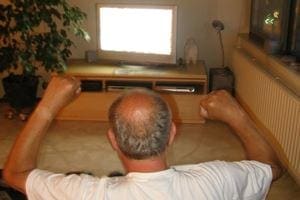Why is it difficult for so many back pain sufferers to find lasting relief? The…

What is Scar Tissue and How Does it Affect Your Range of Motion?
 When people think about scars, they tend to think about the ones that you can actually see. Usually, these are the result of some obvious trauma that has left its mark on the surface of the skin. But did you know that scarring can also occur below that surface, and that this type of scarring can influence how well you move?
When people think about scars, they tend to think about the ones that you can actually see. Usually, these are the result of some obvious trauma that has left its mark on the surface of the skin. But did you know that scarring can also occur below that surface, and that this type of scarring can influence how well you move?
Everyone develops scar tissue over time. This is the body’s normal reaction to injury—no matter how slight. Even simple actions that most people wouldn’t regard as injury-producing can lead to a buildup of scar tissue. Repetitive motions like typing, for example, can cause micro-trauma to the soft tissue (often referred to as an overuse injury), leading to carpal tunnel syndrome. As part of the repair process, scar tissue is created. However, this type of tissue tends to interfere with the smooth movement of muscle and may eventually affect your range of motion.
If you have ever felt a tightness or inability to move a joint in a fluid manner, you likely have a buildup of scar tissue. Our soft tissues (including tendons and ligaments) are made of collagen, which is a substance that looks like strands of rope wound together into a net-like formation called fascia. When an injury occurs, it causes frays, kinks and bends in the collagen strands of the fascia, which create the scar tissue. Ideally, scar tissue is replaced by normal tissue as it heals, but this does not always happen.
Adhesions are small bits of scar tissue that bind the tissues around them, leading to stiffness and a reduction in strength and range of motion. Nerves often become trapped in these adhesions, creating “trigger points” from which pain can radiate. Painful movements lead to less activity, and less activity leads to a further reduced range of motion. Because scar tissue has less circulation and is less flexible and elastic than normal muscle tissue, muscles become shorter and weaker. It is important to remove these scar tissue adhesions in order to reduce pain and restore strength and the proper range of motion.
Therapies such as the Active Release Technique (ART), Graston Technique and Myofascial Release are used by some chiropractors as a way of breaking up scar tissue to release trapped nerves and restore greater range of motion. The Graston Technique uses stainless steel instruments to break up the fascia, whereas ART and Myofascial Release employ a direct hands-on approach to remove adhesions and break up scar tissue.
Many chiropractors incorporate one or both of the above therapies into their practice to help increase their patient’s strength and range of movement, as well as helping their chiropractic adjustments to last longer. The more fluid and free of scar tissue the musculoskeletal system, the less likely tense muscles will pull the spine back out of alignment. So ask your chiropractor if he or she offers one of these therapies.
Chiropractic physicians are experts in diagnosing a wide range of musculoskeletal conditions, including those that affect the body’s soft tissues—particularly the joints. We work closely with our patients to build strength, stamina, balance, flexibility and coordination so that they maintain their mobility and enjoy an active, healthy lifestyle. If you have general health and wellness questions or specific concerns about your own mobility or range of motion, please call or visit our office today! We’re here to help!




